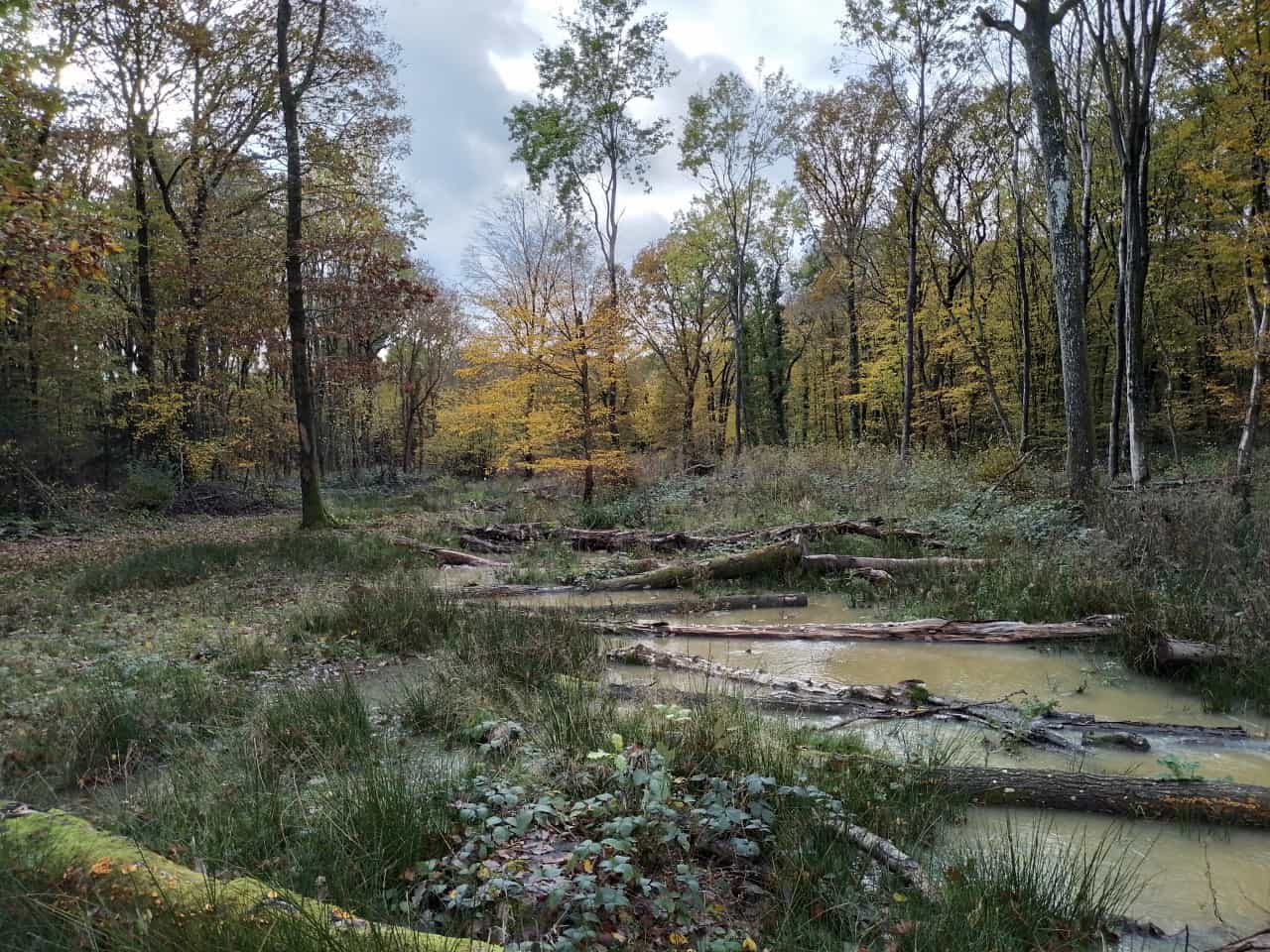As our PROWATER project comes to an end, Kathi Bauer, our Senior Natural Capital Officer, reports on the importance of working together using nature-based solutions to retain water in the landscape, protecting rivers and communities from the effects of climate change.
The results of our work, carried out over the past four years, will help retain 24 Olympic sized swimming pools worth of water in the catchment each year – and that’s just on a small section of the landscape.
Water scarcity is an issue we need to address now
Back in 2018, when PROWATER first started, a summer drought was putting pressure on water resources and nature. Then, we thought this was a timely reminder of how vulnerable our freshwater systems are to climate change and the need to address this challenge for people and wildlife.
Little did we know that, four years later, we would experience the driest July in England since 1935, with temperatures reaching 40°C for the first time. Almost the entire country had hosepipe bans imposed. Many rivers recorded the lowest flows ever seen – and it was even reported that the source of the Thames dried up.

PROWATER – Protecting and Restoring Raw Water Sources Through Actions at the Landscape Scale – set out to demonstrate how nature-based solutions (NbS) can replenish water resources at a catchment scale. These NbS included wetland restoration and changes to rural land management.
In the four years since the project started, the South East Rivers Trust has worked with:
- three water companies
- 24 farmers
It has delivered:
- 2 headwater wetland restoration sites
- 16 hectares of improved soil management
- supported 8.4 ha of chalk grassland and heathland restoration
Together, these measures will help retain more than 60 million litres of water (enough to fill 24 Olympic sized swimming pools) in the catchments every year through slower release to the river and improved recharge to the groundwater aquifers.
The 2022 drought proved a valuable stress test for these measures, but also brought home the crucial importance of scaling up our efforts to restore catchments in order to protect rivers, wildlife, and our own need for water.
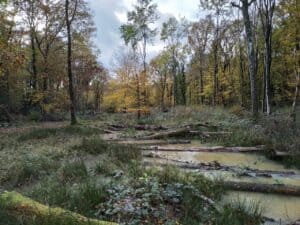
Finding the right solutions for our catchments
As with any restoration effort, a key question was how this work could be funded. Public funding – mainly through agri-environment schemes – was set to change after Brexit, while private markets were only just starting to investigate how natural capital should sit alongside their regular balance sheets.
We worked in partnership with others to develop an evidenced base and demonstration site in the following areas
- Friston Forest, part of the Eastbourne Chalk aquifer in the Cuckmere catchment and a focus area for project partner South East Water where chalk grassland and chalk heathland were restored
- The Little Stour, where we supported Kent County Council and the Kentish Stour Countryside Partnership to improve soil health of farms. By doing this, we enhanced water replenishment of the chalk aquifer that feeds this chalk stream. This work included using cover and companion crops and an innovative rotational grazing trial on a stud farm.
We in particular focused on the River Beult, a tributary of the Medway, which feeds an important abstraction point supplying Bewl Water. This in turn provides water to large areas of Kent. The River Beult is a Site of Special Scientific Interest (SSSI) – the only riverine SSSI in Kent – but is heavily degraded because of historic modifications, including drainage and dredging. Less than 5% of its area remains as wetland habitat – an important natural feature that would have been historically much more common.

Working together to demonstrate how nature-based solutions can be delivered
Using mapping methods developed in PROWATER, we were able to target locations of potential headwater wetland areas, which, once restored, would help the river hold on to water for longer over the course of a year. Kent Wildlife Trust’s Upper Beult Farm Cluster officer helped us contact relevant landowners, leading us to visit Moat Farm, in the headwaters of the catchment, and Pullen Barn Farm, at the start of the High Halden tributary to the Upper Beult. On Pullen Barn Farm, we worked with owner Hugh Richards to trial introducing more species-rich pastures in his livestock system, as reported on a previous blog.
Moat Farm proved to be the perfect demonstration site for a new approach to restoration, focusing on process-based interventions with natural materials from the site. Landowners Mike and Jan Bax were crucial enablers, sharing our vision for the site: to demonstrate how wetland and stream restoration could look in the Upper Beult and make it a viable option for farmers and landowners.
The multi-year nature of the project allowed us to understand the opportunities on the site and build a strong relationship with Mike and Jan, and also the wider farmer cluster, facilitated by the welcoming partnership approach Kent Wildlife Trust took.
Watch our video of work at Moat Farm
At Streetend Wood, one of two wetland restoration sites on Moat Farm, work started in February 2021. We took down some trees, before bird nesting season, to use as material for delivery of the main works in July. In November 2021, the site started wetting up before entering a long, dry period. However, throughout the drought, vegetation stayed lush and some standing water was present until September 2022, providing refuge for wildlife.
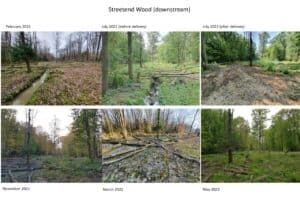
From demonstration site to catchment-scale restoration
While we are really proud of what we have delivered here, we know it is nowhere near enough. Our catchment-focused natural capital mapping, building on the WaterSystem Maps developed by the University of Antwerp, has helped us identify 5,000 ha of potential wetland habitats in headwaters and along the stream network in the Beult alone. If we really want to make a difference to our rivers, then we urgently need to grab hold of these opportunities.
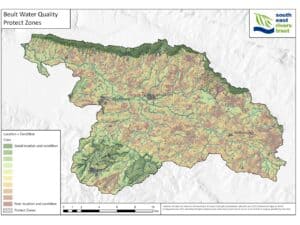
So, how do we make this happen?
The answer, really, is simple: money. Most landowners will not be willing to engage with environmental schemes that have a detrimental impact on their business. While there are a number of positive, valuable options available under existing and new stewardship schemes that support farming with nature, we must go further than cover crops and two metre buffer strips.
We want to deliver on the vision of the Beult that we built over the course of the last few years and create a wetter, wilder and more diverse landscape where the river has space to thrive. We are also helping communities by slowing release of water into the river, from which water supply for the area is abstracted.
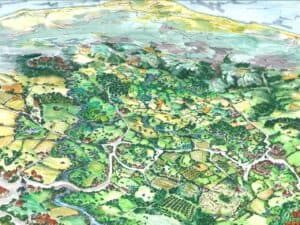
This comes with uncertainty, long-term land use change and unknown costs and activities that need to be built into schemes. We know that public funding can’t deliver on ambitions like this fully. The Green Finance Institute’s Finance Gap for Nature Report estimated that in order to deliver on the targets set by government, for example, we have a gap of £8bn funding committed to reach clean water-related targets alone.
Pilots show value for further funding
Our PROWATER Test & Trial, a sub-project of PROWATER delivered as part of Defra’s work to investigate how future government funded agri-environment schemes can support landscape-scale nature recovery, looked at how we could set payment rates that worked for farmers, and combine private funding (such as from water companies) with public money.
One barrier is the way that water company funding is regulated and its five-year cycle, among other issues. On a regional scale, for example, very few nature-based and catchment options have made it into the regional water resource plan. This is partly because of how difficult it is to model and quantify the cost-benefits of NbS on water supply.
Key to unlocking this will be piloting schemes at a larger scale and developing a shared ambition and understanding of drivers and barriers within the water industry. Then, using these schemes to develop new approaches to assessing, valuing, and integrating nature-based and catchment options into water company business plans.
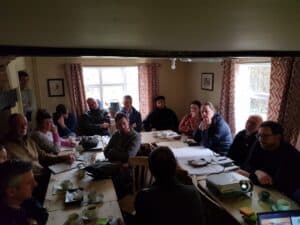
In the Beult, we are now building on our work in PROWATER through a Natural Environment Investment Readiness Fund as well as a partnership with Southern Water and the Upper Beult Farmer Cluster, funded through Southern Water’s Environmental Improvement Fund.
The future: Co-designing landscape-scale schemes
Building on the work at Moat Farm, we are working with nearby landowners to co-develop a plan to restore and protect 18ha of riparian and headwater wetlands along 2.5km of the Upper Beult.
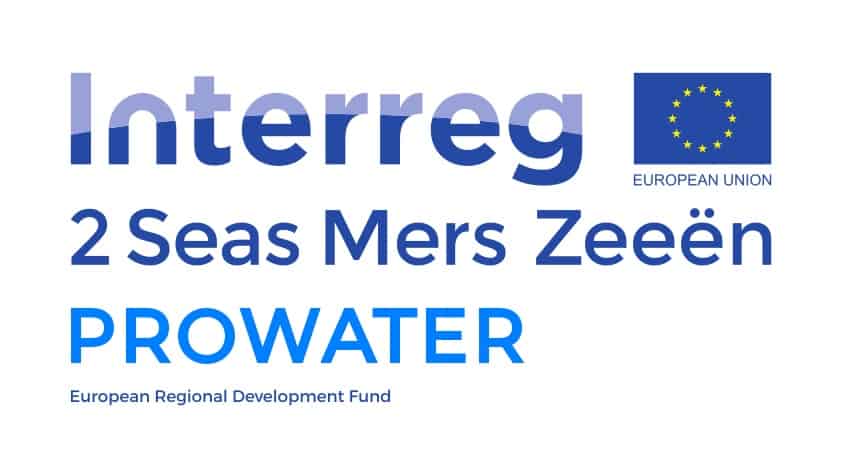
Further afield, across other catchments in the south east, we are using the mapping developed as part of PROWATER to understand the natural assets in the catchment, how they contribute to resilient water supply, and where opportunities are for restoration. Developing this with water company partners (Southern Water and Affinity Water), we are building a shared evidence base of these habitat features and why they are important to protect. This will help us – and them – make decisions about how and where to invest funding and to understand the scale of investment needed and impact possible.
A crucial component is developing payment schemes for landowners that reflect the benefit they are providing to the water company and enable us to deliver value for money to both. There are a lot of challenges, but the most exciting and promising part of this project is that everyone involved sees the opportunity it offers and treats it as a way of learning how we can make this work – together.
PROWATER was funded through the European Regional Development Fund, with additional support from Southern Water, South East Water, Kent County Council, Defra and the Patsy Wood Trust.

